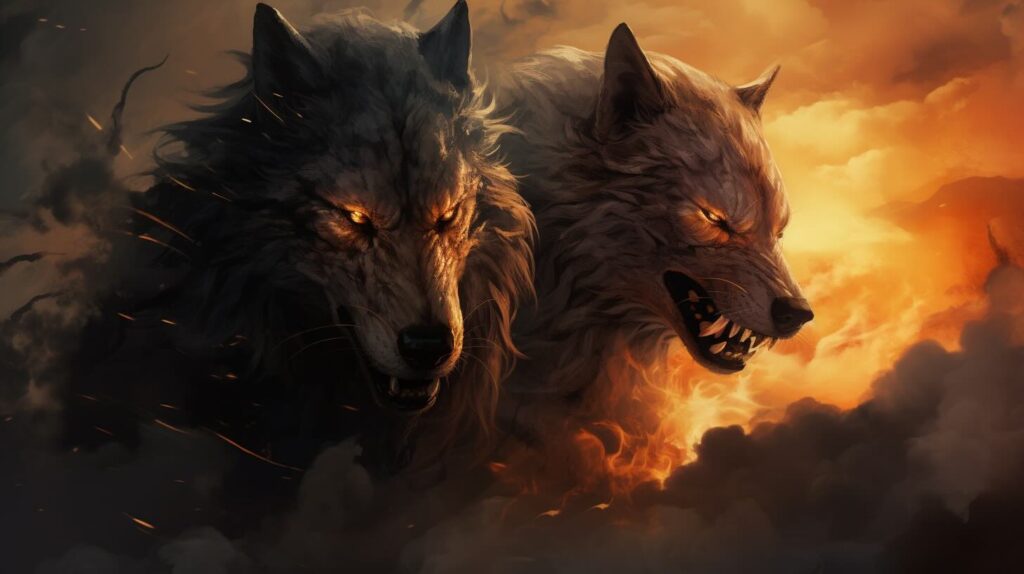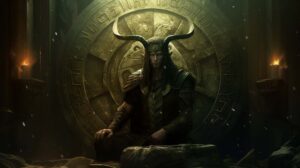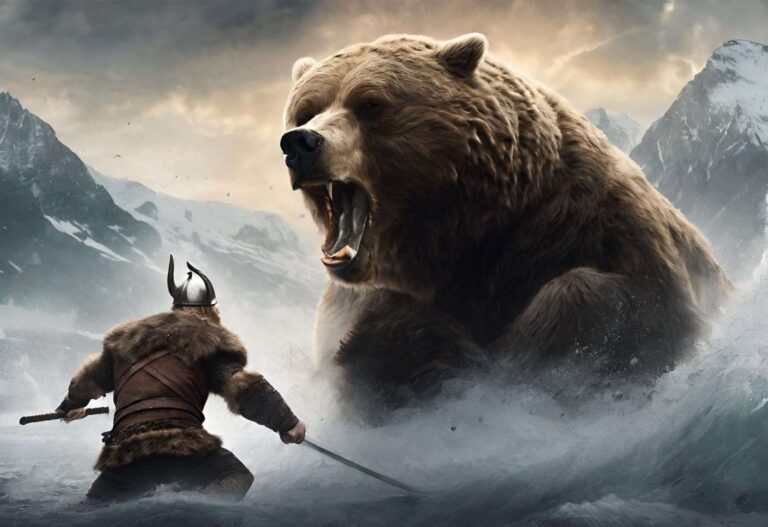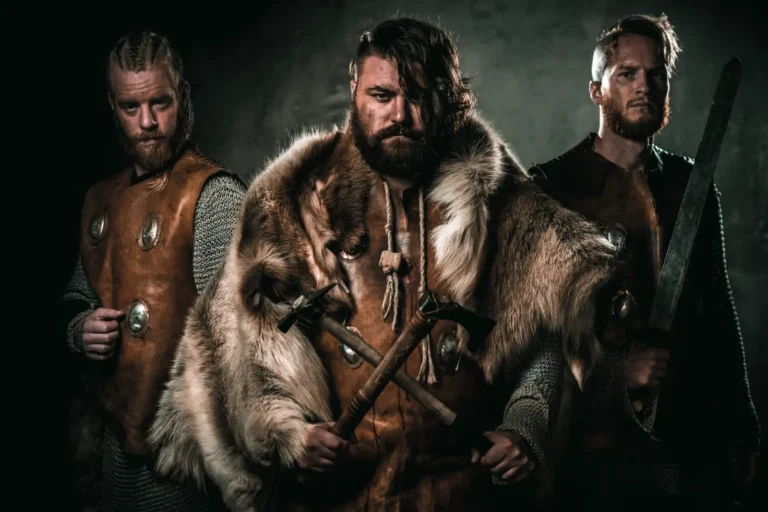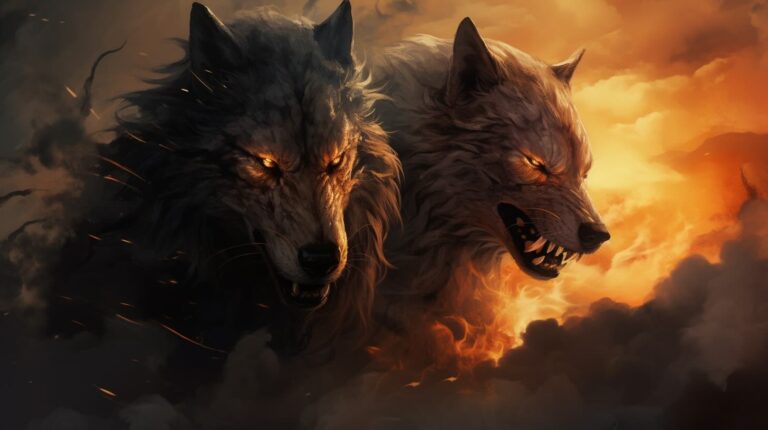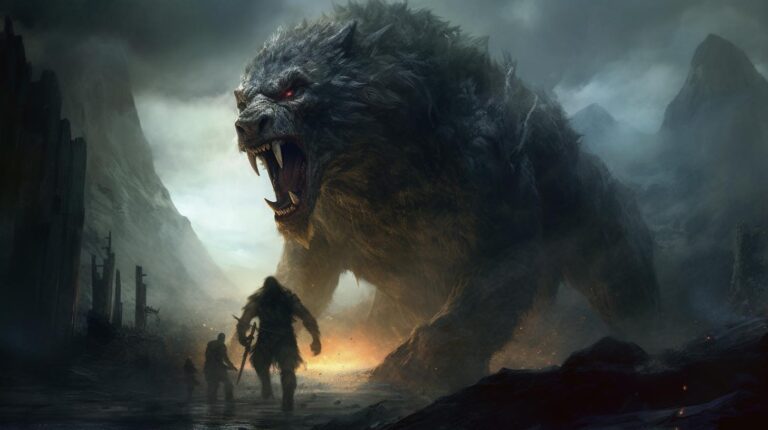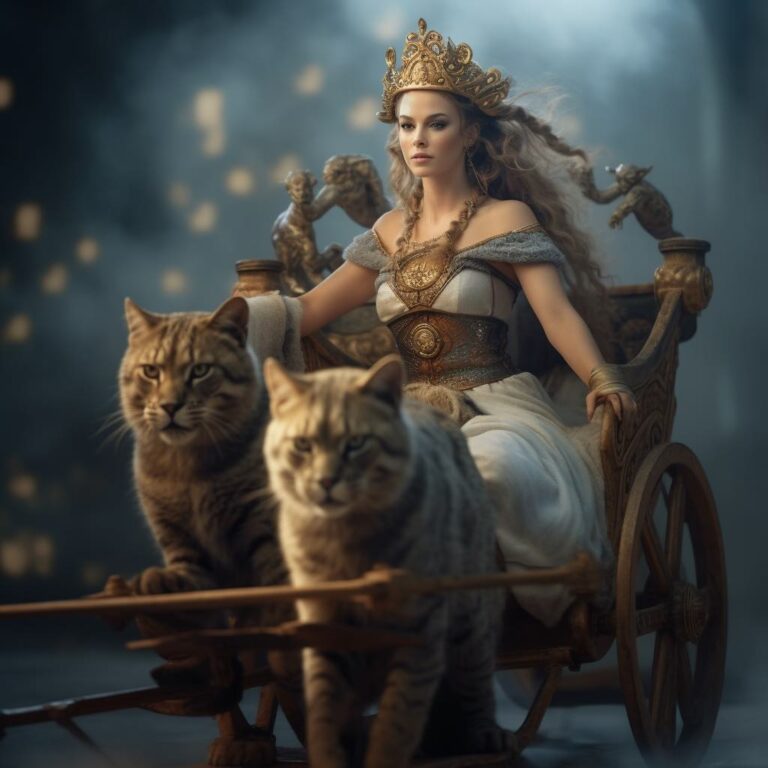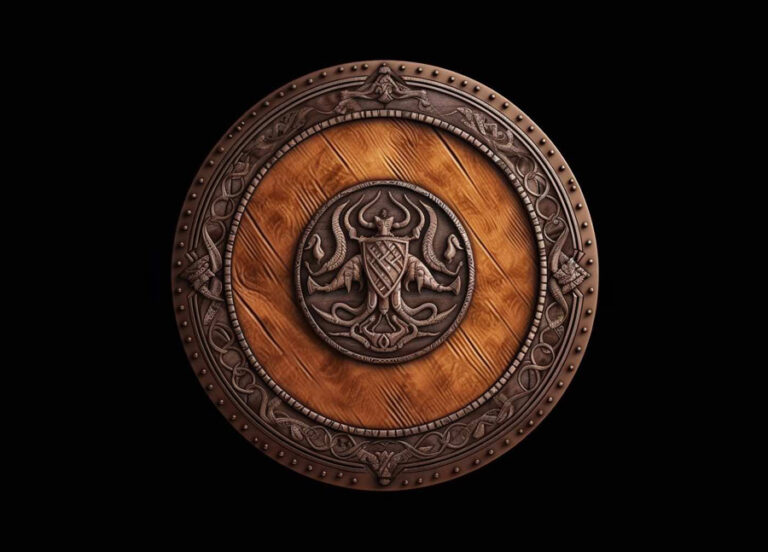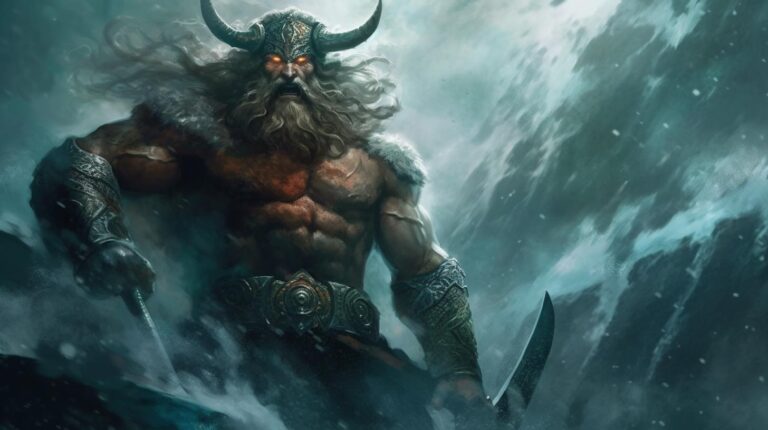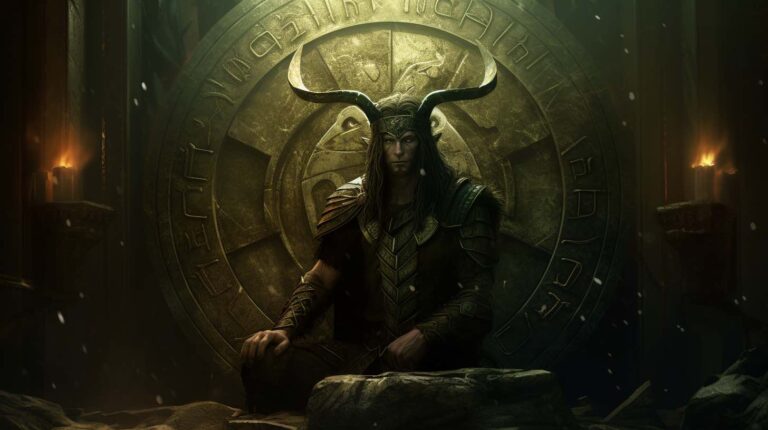Who are Skoll and Hati?
In Norse mythology, Skoll and Hati are two wolves that are known for their pursuit of the sun and moon. Skoll, meaning “Treachery,” and Hati, meaning “Hate,” are born from the most renowned wolf in Norse Mythology: Fenrir. It is said to that Skoll and Hati catch their prey during Rangarok, which causes great disaster. This pursuit has symbolic meaning, representing themes of destiny and cosmic balance in Norse mythology.
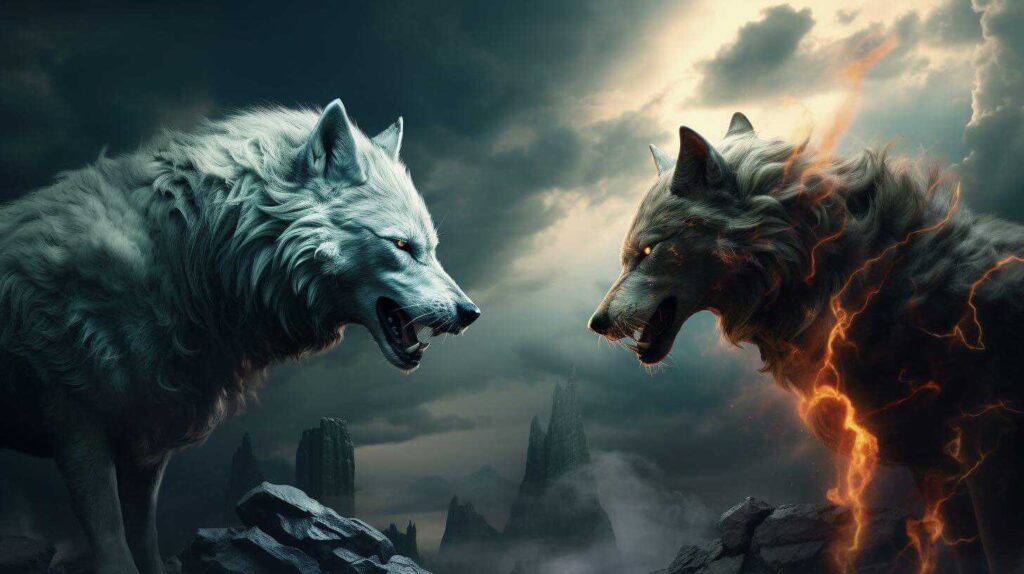
The eternal chase of the sun and moon
The relentless pursuit of the sun and moon by Skoll and Hati transcends the mundane act of hunting; it encapsulates profound cosmic symbolism. The sun, symbolizing light, warmth, and life, and the moon, representing the cyclical nature of time, become cosmic prey in the eternal dance of predator and prey. This perpetual pursuit becomes a metaphor for the cyclical nature of existence, where life, death, and rebirth are not isolated events but part of an unending cosmic rhythm.
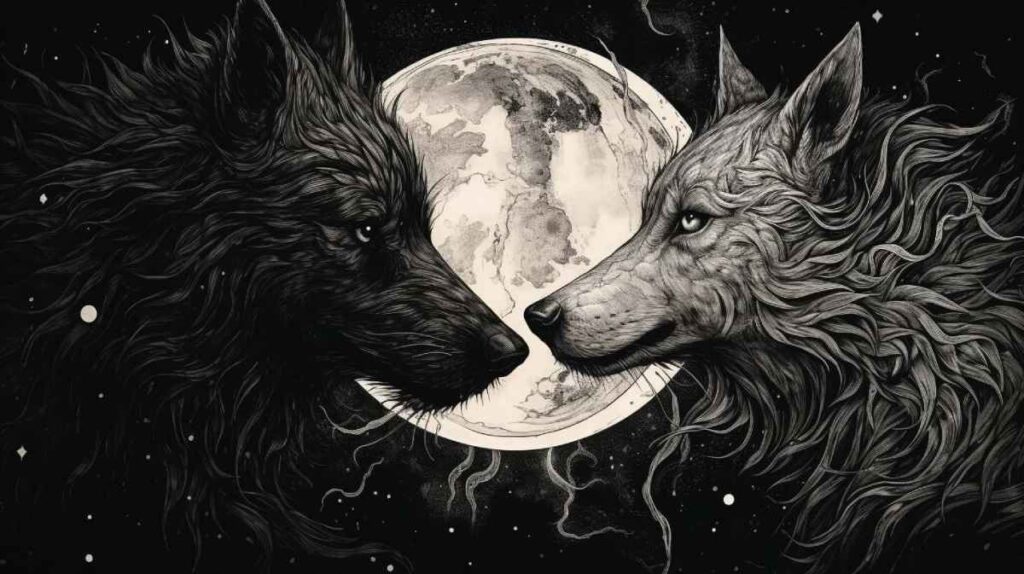
Ragnarok
During Ragnarok, the apocalyptic event in Norse mythology, Skoll and Hati play crucial roles. During Ragnarok they both catch their prey. As Skoll finally catches the sun and Hati seizes the moon, the world descends into darkness. The cosmic balance is disrupted, and the natural order is thrown into disarray. This event marks the beginning of Ragnarok, a period of immense upheaval, conflict, and destruction.
Hati and Skoll symbolism
Their perpetual chase, with Hati pursuing the moon and Skoll the sun, is a cosmic dance representing the eternal rhythms of life, death, and rebirth. The symbolism here reflects the Norse belief in cycles of creation and destruction, where the end of one era paves the way for the emergence of a new one. The capture of the sun and moon represents the inevitable and cyclical nature of cosmic events in Norse mythology.
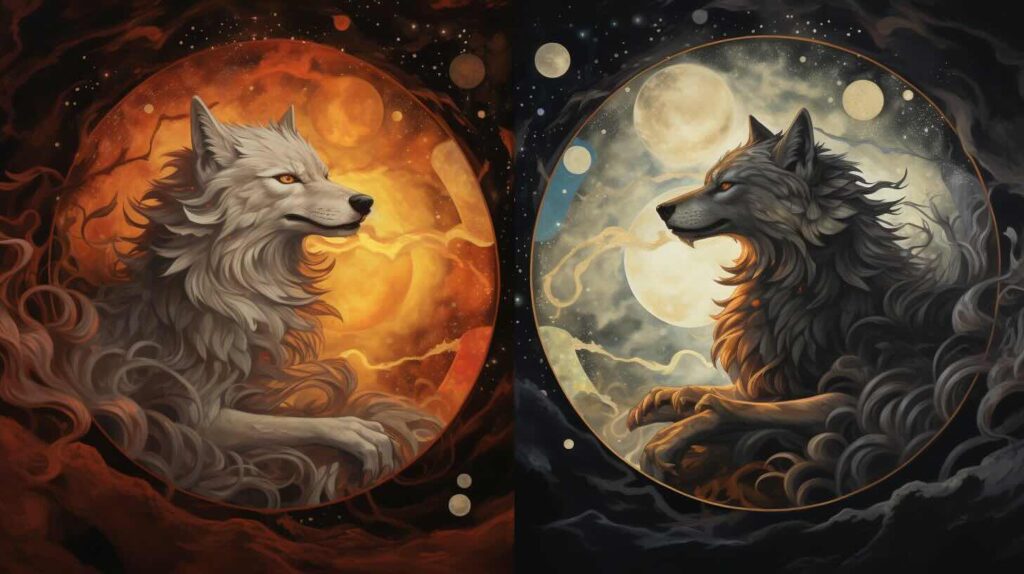
Skoll and Hati in modern culture
Although Skoll and Hati may be less well known than some other Norse mythological figures, they have found their place in modern media, literature and art:
- Literature and art: From epic fantasy novels to graphic novels and poetry, Skoll and Hati often make appearances, contributing to a rich tapestry of modern myth-making.
- Popular media: The prevalence of Norse mythology in popular media, particularly in television and film, has brought Skoll and Hati into the mainstream. These celestial wolves are often portrayed as powerful and enigmatic figures, adding a touch of ancient mysticism to modern storytelling.
- Tattoo culture: The iconic imagery of Skoll and Hati’s cosmic pursuit has become popular in tattoo culture. Many individuals choose to ink these celestial wolves as symbols of cosmic balance, destiny, or as a nod to their affinity for Norse mythology.
- Gaming and entertainment: Skoll and Hati frequently appears in video games and other forms of entertainment. They are perfect characters for immersive games that are based on Norse mythology.
- Fashion and merchandise: Images of Skoll and Hati, whether in celestial chase or as standalone symbols, are often featured on clothing, accessories, and other merchandise.
In Norse mythology, Skoll and Hati are fascinating wolves with great symbolism that is still relevant today. If you are interested in learning more about the different wolves in Norse Mythology, you can read: All wolves in Norse mythology: Fenrir, Hati and Skoll, Garmr, and Freki and Geri
